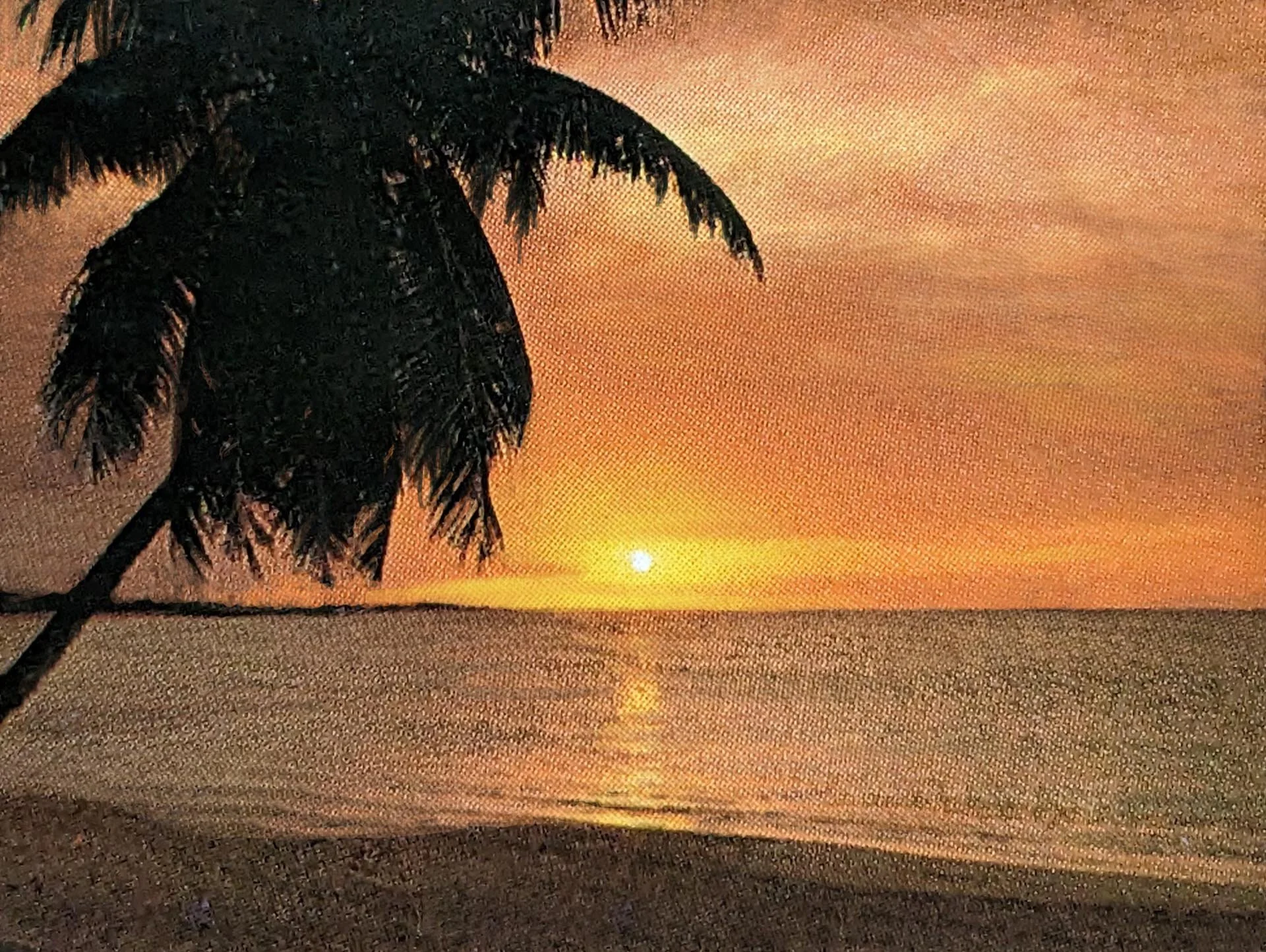Construction Paper Palm Tree (Part 3 of 3: The Brilliance of Light)
By Tracey Maras
Admit it. We’ve all done it. We painted that dramatic sunset sky, capturing all its glory. And silhouetted against the sky was a tree. Maybe it was an evergreen or an oak, or that iconic palm tree. There it stands. A silhouette devoid of color. We used black for the tree, well, because that’s how it looked in the photo.
Unfortunately, cameras struggle in situations where there exist very bright light and very dark shadows. If it attempts to capture all the colors in the light areas, it will leave the shadow areas as flat black shapes. The camera can capture one or the other, the light or the dark, but seldom both accurately. If we rely solely on what the camera captures, we are missing half of it.
Therefore, observation becomes critical when taking that photo as color blazes across the sky. Take a moment to look at the shapes in silhouette. They are not devoid of color. While the sharpness of details and clarity of colors are diminished, they are there to be rediscovered.
At a minimum, make mental notes of the textures, details, and colors you see. Better still is to develop the habit of making small color studies to which you can refer when back in your studio.
Just because the photo gives us a black construction paper cut-out of a palm tree does not mean we should paint it that way.
This post originally appeared on www.traceymaras.com. It has been republished here with permission.

